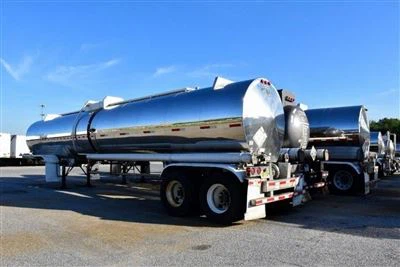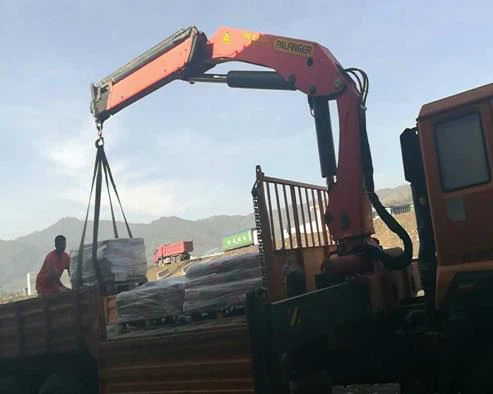Understanding Fire Truck Weight: A Comprehensive Guide

Fire trucks are essential vehicles for emergency response teams, enabling them to tackle fires, rescue operations, and medical emergencies. One crucial aspect of fire trucks that often gets overlooked is their weight. Understanding fire truck weight is vital for ensuring safe operations, compliance with regulations, and improving overall efficiency in various scenarios. In this article, we will delve into the specifics of fire truck weight, factors influencing it, and how it impacts performance.
What is Fire Truck Weight?
Fire truck weight refers to the total weight of the vehicle, including its chassis, equipment, and any water or chemicals it may carry. The weight is a critical metric that affects the truck’s performance, maneuverability, and the safety measures needed during emergency responses. Fire truck weight classifications vary based on the type, size, and intended purpose of the vehicle.
Types of Fire Trucks and Their Weight Classes
Fire trucks come in various types, each designed for specific tasks. Understanding the weight categories helps in comprehending the truck’s capabilities. Below are some common types of fire trucks and their typical weight classes.
1. Fire Engines
Fire engines, often referred to as fire trucks, typically carry water, hoses, and firefighting equipment. Their weight can range from:
| Type | Weight Range (lbs) |
|---|---|
| Type 1 Fire Engine | 30,000 – 40,000 |
| Type 2 Fire Engine | 24,000 – 36,000 |
2. Ladder Trucks
Ladder trucks are equipped with an extendable ladder for high-rise firefighting. Their weight generally falls within the range of:
| Type | Weight Range (lbs) |
|---|---|
| Platform Apparatus | 40,000 – 50,000 |
3. Water Tenders
These are specialized for carrying large amounts of water, especially in areas without a reliable water source. Typical weights include:
| Type | Weight Range (lbs) |
|---|---|
| Water Tender | 20,000 – 30,000 |
4. Brush Trucks
Designed for wildland firefighting, brush trucks are lighter and more maneuverable, with weights including:
| Type | Weight Range (lbs) |
|---|---|
| Brush Truck | 10,000 – 15,000 |
5. Rescue Trucks
Rescue trucks are equipped with specialized tools for extrication and patient care. The weight usually ranges from:
| Type | Weight Range (lbs) |
|---|---|
| Rescue Truck | 20,000 – 30,000 |
Factors Influencing Fire Truck Weight
Fire truck weight is influenced by several factors, including design specifications, equipment, and materials used in construction.
1. Chassis and Frame Construction
The chassis and frame are key components determining the truck’s baseline weight. Different materials, such as steel, aluminum, or composite materials, can affect overall weight. A lighter frame can enhance maneuverability without compromising strength.
2. Water and Chemical Capacity
Fire trucks often carry thousands of gallons of water and various chemicals. The amount and type of liquids can significantly impact total weight. For instance, a standard fire engine carries about:
| Capacity (gallons) | Weight of Water (lbs) |
|---|---|
| 500 | 4,185 |
| 1,000 | 8,350 |
3. Equipment and Tools
Firefighting tools and equipment also contribute to the overall weight. Items like hoses, ladders, rescue tools, and personal protective gear add substantial weight. It’s essential to consider these when designing the vehicle.
4. Personnel and Payload
Fire trucks are often designed to accommodate a specific number of crew members. The combined weight of the crew, potential passengers, and any additional cargo can significantly increase the total vehicle weight.
The Impact of Fire Truck Weight on Performance

Understanding fire truck weight is crucial for various aspects of performance, safety, and operational efficiency.

1. Handling and Maneuverability
Heavier fire trucks may be more challenging to maneuver, especially in narrow streets or off-road conditions. Having a well-balanced weight distribution is vital for maintaining control during emergency operations.
2. Braking Distance
The weight of a fire truck directly affects its braking distance. Heavier trucks will require longer distances to stop, which can be critical in emergency situations when quick reactions are needed.
3. Engine Capacity
To manage heavier weights, fire trucks are often equipped with powerful engines. This extra power is necessary for effective acceleration and maintaining speed while carrying full loads.
Legal Weight Regulations for Fire Trucks
Fire trucks are subject to various legal weight regulations that differ by state and country. Compliance with these regulations is crucial for safety and operational effectiveness.
1. Federal Weight Limits
In the U.S., the Federal Highway Administration sets weight limits for commercial vehicles, which include fire trucks. Understanding these limits is essential for avoiding fines and ensuring road safety.
2. State-Specific Regulations
Each state may have specific regulations regarding fire truck weights, including exemptions for emergency vehicles. Compliance training can help teams understand these regulations and keep their trucks within legal limits.
Practical Tips for Managing Fire Truck Weight

To ensure that fire trucks are operated safely and effectively, the following tips can be beneficial:
1. Regular Weight Checks
Conducting regular weight checks helps ensure compliance with regulations and maintain optimal performance. Use a certified scale to check weight both when the truck is fully loaded and empty.
2. Equipment Management
Evaluate the necessity of each piece of equipment on the truck. Removing unnecessary items can help manage weight and improve maneuverability.
3. Training and Education
Ensure all personnel are trained in weight management, including safe loading practices. Understanding how weight impacts operations can lead to better decision-making during emergencies.
4. Maintenance Checks
Keep up with regular maintenance to check for any equipment failures that could impact weight distribution and handling. Proper tire pressure, brakes, and suspension systems are crucial for safe operations.
Future Trends in Fire Truck Design
As technology advances, fire truck designs are evolving to address weight management and performance.
1. Use of Lightweight Materials
Modern fire trucks are increasingly utilizing lightweight materials like aluminum and advanced composites. These materials reduce overall weight without compromising strength and durability.
2. Electric and Hybrid Fire Trucks
The shift towards electric and hybrid vehicles is occurring in the firefighting industry. These vehicles offer reduced weight options due to their design and can help lower operating costs in the long term.
Frequently Asked Questions (FAQ)
1. What is the average weight of a fire truck?
The average weight of a fire truck varies by type, typically ranging from 10,000 to over 50,000 pounds, depending on its design and purpose.
2. How does fire truck weight affect its performance?
Fire truck weight impacts handling, braking distance, engine performance, and overall maneuverability, all crucial for effective emergency response.
3. Are there weight limits for fire trucks on public roads?
Yes, fire trucks must adhere to federal and state weight regulations. These limits help ensure safety and compliance while on public roads.
4. Can the weight of a fire truck be reduced?
Yes, unnecessary equipment can be removed, and lightweight materials can be used in manufacturing to reduce the overall weight of fire trucks.
5. Why is weight management important for firefighting operations?
Proper weight management ensures safety, enhances performance, and improves the effectiveness of fire trucks during emergency operations. It also helps maintain compliance with legal regulations.
6. How often should fire trucks be weighed?
Fire trucks should be weighed regularly, ideally after significant changes such as new equipment installations or maintenance activities. This ensures compliance with regulations and optimal performance.
